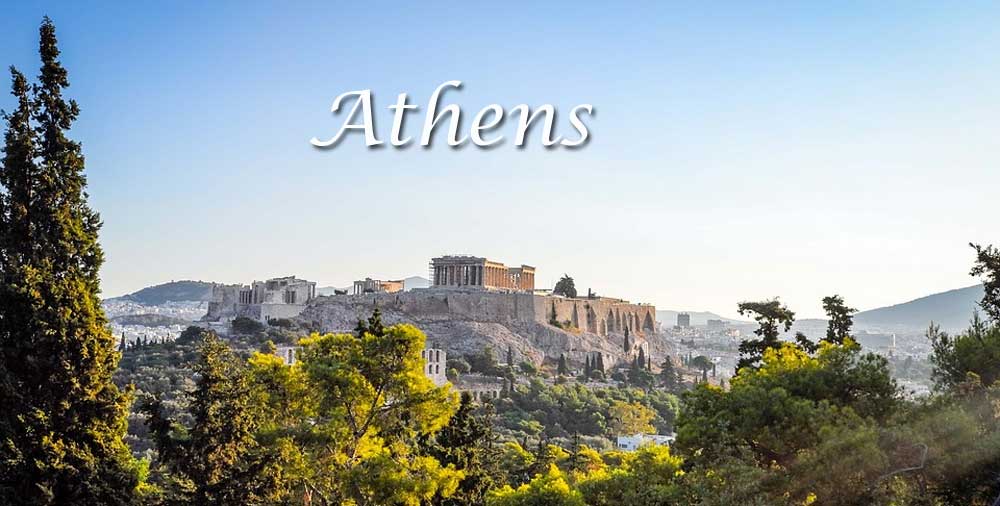Monastiraki the most popular area of Athens
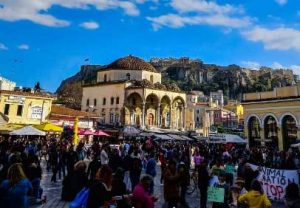
In the old days the flea market it was called Yousourum, Stavros Xarhakos made a wonderful Greek popular song the famous “Yousouroum” during the 60’s. The main flea market of Athens is at Abyssinias square at the end of Hephaestou street. Along Hephaestus street you will find mainly various shoe shops, clothing shops and music stores. In the same street within the arcades there are some good second hand book stores.
Along the Adrianou street facing the Acropolis and the Attalos stoa is one of the best places for relax and enjoy the scenery at one of the numerous cafes and restaurants in this area is located the church of Agios Phillipos with its clock that bells every hour. From the Monastiraki square after the old mosque that today hosts a ceramic collection, towards Areos street is the Roman Library of Hadrian. Following that street and turning to the left at Dexipou street you will get to the monument of the bath of the winds or Aerides.
Where is Monastiraki located?
Monastiraki located in the central district of Athens around Monastiraki Square, which extends to the south side of Ermou Street, from the height of Mitropoleos Square to Thissio Square. It is adjacent to the districts of Psyrri, Plaka and Thiseio.
Its name comes from the old church of the Assumption of the Virgin Mary in Athens, which is built on the square, and was formerly part of a monastery and specifically, the Monastery of Karea in Ymittos. In Monastiraki Square also dominates the old Tzistaraki Mosque which was built in 1759 and which today houses a branch of the Museum of Folk Art.
The area of Monastiraki was considered for a long time part of the district of Psyrri, which reached up to Thissio and the borders of Plaka. It began to exist as a separate district after the opening of Ermou Street in 1835.
Sights
The Byzantine church of Pantanassa
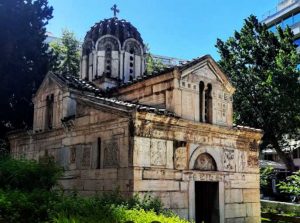
In recent years it has been transformed into a parish church in the area, where the Assumption of the Virgin Mary is celebrated.
This Byzantine church of Pantanssa is indisputably the central cultural jewel of the Monastiraki area and with its moral magnificence and centuries-old historical tradition, it is one of the great cultural components of the identity of Athens.
At the first stage of its establishment, Pantanassa was the property of the lord Nikolaos Bonefantzis and later it became the Catholicos of the women’s Monastery that was created, covering the entire area of the current square.
The Monastery flourished during those years, having advanced schools for the era of handicrafts, tapestry, etc. and at the same time being an asylum for the persecuted young girls of the time, where they were given the opportunity to learn the basic letters and an art. For its social and spiritual prosperity, it was given the name “Mega Monastery”. However, over time it lost its prestige and glamor and was called Monastiraki, naming the entire area.
The Metro station
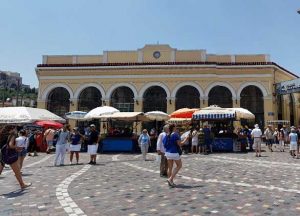
It was inaugurated on May 17, 1895 and the original name of the station was Monastirion, which has been preserved on the signs of the line 1 station.
It is partly open, open trench type, and partly underground, in arched development and has two side docks. Its current form dates back to 2003, when modernization works were carried out on the older station and at the same time the station serving line 3, which is entirely underground, was inaugurated.
The mosque at Monastiraki square
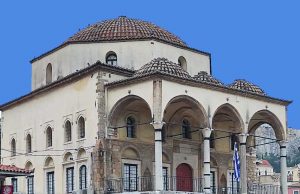
The ancient Athenians believed that under every pillar of the temple was trapped a curse, which was confirmed by the outbreak of famine in the city.
The legent
According to the same legend, the temple of Zeus mourned so loudly the destruction of the column that that night no one slept in Athens. The Athenians calm down only after the killing the voevoda.
After the Revoloution of 1821
After the Revolution of 1821, the building had various uses for over a century, while in 1924 it was transformed into a folklore museum. George Drosinis offered two valuable collections, the furniture, utensils and icons by the Dane K. Pelf and the Japanese vessels of Grigorios Manos. He renamed it the National Museum of Cosmetic Arts. Today, the mosque houses a branch of the Museum of Folk Art and houses a rich collection of pottery, mainly from Asia Minor.
